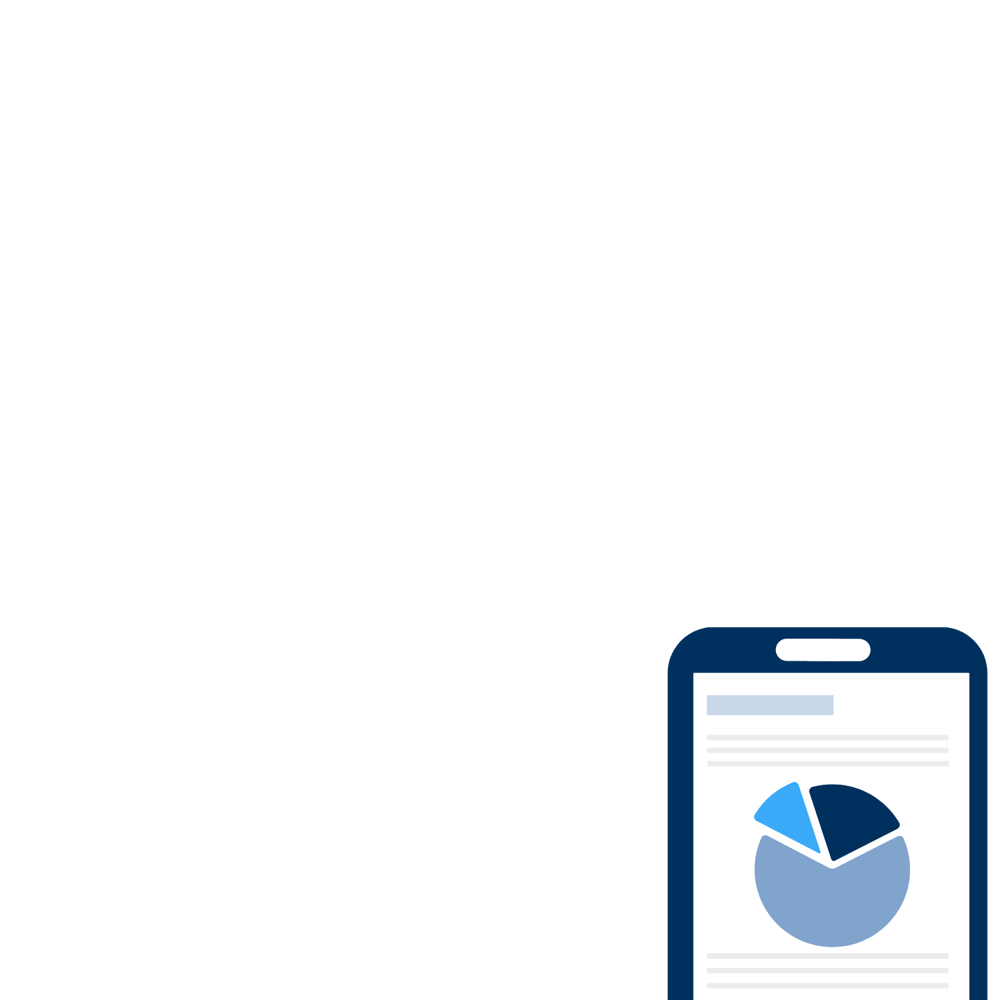

For the latest on ecommerce tips and best practices.
Tips to Increase Your Ecommerce Conversion Rates

As an online business owner, it may feel difficult to gauge how well your business is doing. After all, you don’t have the usual physical confirmation of people walking through your brick-and-mortar doors to peruse your inventory. Initially, the only way you might measure success is by how many items you sell.
That strategy is a good way to keep losing out on sales. When you lack data, tools, and insight into why your customers do or do not buy your product, you cannot compete in your marketplace. With the right tools and measurements, you can uncover your conversion rate.
Why is knowing your conversion rate important for ecommerce? Knowing this metric is how you understand your audience and boost your revenue.
Traffic on your website is good, but engagement and conversion result in product sales. If you understand your conversion rate, you can develop strategies to increase it. If you increase your conversion rates across your site, you increase your overall profit and growth.
So what is conversion, and what is your conversion rate?
Defining Conversion Rates
Conversion is the process of changing or causing something to change from one form to another.
In digital marketing, you’re changing your audience from “someone who is browsing your shop” to “someone who is engaging with your shop.”
Points of conversion like the following are good examples:
- Adding a product to a cart or wishlist
- Liking or reposting social media shares
- Signing up for email promotions
- Selling your online product
As you can see, digital conversion can be extremely broad. Any metric or action you find valuable can be a point of conversion. Highlighting those checkpoints in your ideal customer process is key to optimizing conversion rates.
Calculate Your Conversion Rate
Imagine your conversion rate as a simple ratio. If you get 1000 visitors on your website, and 10 people make a purchase, you have a 1% conversion rate.
Measuring all of those disparate conversion points means the simple ratio becomes a lot more complex. Total visitor sessions may see a 60% conversion where visitors click to view a product page, while 20% of those sessions may result in a conversion where a customer adds that product to their cart. Finally, 10% of those shoppers may convert to actual customers and purchase that same day. Assuming 1000 visitors, that results in 12 customers with a purchase (or a final conversion rate of 1.2%).
Push for the Optimal Conversion Rate
You do not want a 1.2% conversion rate. Average conversion rates hover between 2.5-3%. By increasing the conversion at each of those checkpoints, you maximize the odds of a sale. Your goal, with the right tactics and tools, is a conversion rate higher than 3%. Once you reliably reach that, you can develop your business strategies with greater confidence.
What Stops Shoppers From Converting?
Increasing your conversion rate starts with understanding why a customer may not purchase from you in the first place. Some of these are external—visitors like to browse a store even if they have no intention or budget to spend, for example. You have a few options to incentivize a spontaneous spend, but keep in mind the factors you can change that will increase conversion.
Page Content
The worst thing your site can do is make a bad first impression. From shoddy photographs to unconvincing copy, your digital storefront might push browsers away as an eyesore before they even realize how you can help them. Make sure your descriptions are compelling and clear. Know your target audience and target their concerns, questions, and needs. A distracting page, though it might cause visitors to remain on your site longer, is not likely to result in the conversion you’re hoping for.
Ease of Access
The age of the internet has created the attention economy, and supply is often scarce when it comes to the attention span of online shoppers. If your visitors have to wait through long loading times or clunky checkouts because of an unoptimized site, you’re more likely to lose them along the way. You should take the time to sharpen things up, make customer throughput smoother, and boost your chances of conversion.
Trust Issues
Alongside digital business owners, plenty of scam artists want to make a quick buck on an unassuming visitor. If your store seems untrustworthy, visitors may not even give you a second thought. One of the biggest ways to alleviate this is through assurances and guarantees. Security badges on your site, such as Norton Shopping Guarantee, give your customers peace of mind through verified identity and product protections. Combine that low-load, high-trust tool with best practices and a firm understanding of your metrics, and you immediately open the door to wider engagement and conversion.
Metrics and Tools to Monitor Conversion Rates
Understanding the various metrics before diving into conversion-boosting tools will help you navigate and implement the tools that work best for your needs:
Bounce Rate
Your bounce rate is the number of visitors that show up, go nowhere, and leave. Imagine a video clip of someone running into a clear glass door. Even if they want to purchase something, maybe an issue with your site or product pushes them to stop and, well, bounce! A high bounce rate indicates that people come to your site and decide you do not have anything to offer them, so they leave without triggering any events (events mean clicking on something, going to another page, etc.).
Exit Rate
The exit rate refers to the number of people that leave your site from a certain page. Even if they explored your website for hours, they left at some point. If a particular page on your website has a higher-than-expected exit rate, it may be worth investigating why they leave from that page more than others.
Differentiating Bounce and Exit
These two terms are deceptively similar, but they offer very different outlooks when seen from the right perspective. The bounce rate measures the percentage of visitors that leave your site after landing on only one page. The exit rate tracks the number of visitors that leave your site from a particular page.
Adjusting your messaging to better fit your audience may help get people to stick around and lower your bounce rate. Altering your pages to be more engaging may keep more visitors exploring further.
Average Time Spent and Pages per Session
Whether a visitor bounces or exits, they spend a certain amount of time on your site. It’s important to understand the number of pages a visitor explores before leaving your site or finding what they want. These two metrics alone bring a wealth of insight to your operation.
A few examples may help illustrate this:
- A bounced visitor with a session time of 30 seconds on your front page represents an extremely brief glance at your shop.
- A session with six hours on your home page might indicate a user that opened your site and left it to look at later.
- Sessions that involve a brief time with many pages may represent a window shopper browsing through the bulk of your items.
- A user who enters from your homepage and navigates to a few product pages over 20 to 30 minutes may be comparing products to find the best fit for them.
While we can only interpret and imagine what a single session length could imply, the more data you have on average session lengths and the average number of pages viewed, the more accurately you can plan around the average customer.
Tools to Measure Your Conversion Rate
Plenty of companies offer analytics tools for your website. Google and Facebook analytics track visits and bounce rates alongside what led them to your website. Other tools take measurement to a new, visual level. Thermal maps from apps like Hotjar give you a colorful display that indicates where a visitor’s cursor hovers and clicks, as well as how far down the page they go before leaving your page or clicking to another page on your website.
Increasing Your Ecommerce Conversion Rate
With all that info laid out, you can finally start asking yourself the hard questions about your digital storefront as it stands and what you can do to improve it, including your conversion rates.
It Takes Time
Even with an idea of how to improve your website, you will not know the full impact of the changes you’ve made until you measure your results. Your business is constantly in a cycle of iteration, reflection, and improvements. If you change too much all at once, it may be difficult to determine which change boosted your conversion rate the best.
When it comes to making changes to your website, take it slow and measure as you go. That will help you know what changes have made the most impact, which will in turn help you decide next steps.
10 Easy Tactics to Boost Your Conversion Rate
You have plenty of ways to change your website. This ranges from whole overhauls to minor adjustments in descriptions. You can start improving your conversion rate right away with something as easy as installing a Shopify app on your site.
- Swap out your product images for well-lit, high-resolution pictures that draw the eye.
- Organize your page to point customers to your products fast—avoid a cluttered homepage with a lot of descriptions.
- Describe your products clearly and compellingly on their own page. Your customers have to imagine the product without getting their hands on it. Make that easier for them.
- Avoid an overwhelming amount of calls to action. While you are a digital business, coming off too salesy can seem intimidating and turn people away.
- Let the cart take the spotlight. With a customer’s shopping cart within easy access throughout their session, you can inform them what they have ready to purchase or show them how easy it is to get through the purchase process.
- Offer incentives like free shipping or discount codes. These can entice a customer to add even just one item to their cart, which is likely to keep them browsing for more.
- Avoid forcing a user to sign in to purchase from you. A mandatory account creation right before a purchase is a page with a commonly high exit rate.
- Offer an optional email form throughout a customer’s session. An optional prompt allows willing customers to learn about regular deals and unwilling customers to purchase their cart without any hassle.
- Optimize for mobile. Many customers browse on their phones, and if your website is clunky on a small screen, visitors may find it easy to bounce from your homepage because of the bad impression.
- EARN THE TRUST OF YOUR VISITORS. Visitors are highly unlikely to purchase from a site that feels untrustworthy. You can improve this with helpful contact information, a clear return policy, and security badges that assure customers that their purchase has guarantees they can rely on.
Boost Your Conversion Rates Right Away
Security badges like Norton Shopping Guarantee are a low-load, high-value add-on for your website. At a glance, your shoppers will see that your products have the backing of a well-trusted company when they purchase from you. With a single click of the badge, they can learn the nitty-gritty details about what Norton Shopping Guarantee offers—all at no cost to them:
- $100 Lowest Price Guarantee—Refunds the difference up to $100 if a shop lowers the price of a product shortly after purchase.
- $1,000 Purchase Guarantee—Refunds the cost of the product up to $1,000 if a customer does not receive what they ordered.
- $10,000 Identity Theft Protection—Reimburses up to $10,000 for costs related to a stolen identity as a result of the purchase.
When you partner with Norton Shopping Guarantee, your shoppers can see that you care about their security and that they will receive exactly what they purchased. The confidence and trust your visitors experience means they are more likely to become customers. In fact, merchants that use Norton Shopping Guarantee see a 7% increase in conversion rates on average. With Norton Shopping Guarantee, you take the first step to boost your conversion rates and increase your revenue. Get started with Norton Shopping Guarantee today.
Stay in the know
Subscribe to the Norton Shopping Guarantee blog and receive the latest in ecommerce best practices.

-1.png)
.png)
